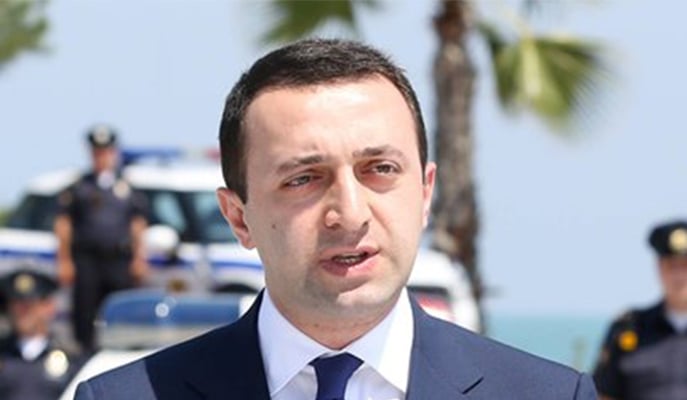On 13 September 2014, in the Municipality of Kareli’s village of Abano, the Prime Minister of Georgia had a meeting with locals. Irakli Gharibashvili spoke about the ongoing infrastructural programmes in the villages located along the occupation line. According to the Prime Minister, in 2013, in 39 villages near the occupation dividing line, the problem of irrigation water was solved, up to 20 clinics were built and roads were rehabilitated. Additionally, the studies of 470 students were financed from the budget with GEL 900 thousand having been allocated for this purpose. The Prime Minister also noted that the gasification process began in the villages located along the occupation line in March 2014 with 62 localities to be gasified by the end of the year.
FactChecktook interest in the Prime Minister’s statement and verified the facts mentioned in it.
FactCheck has already writtenabout the irrigation system rehabilitation in the villages located along the occupation line. The Saltvisi-Tirifoni irrigation system rehabilitation project was implemented by the Municipal Development Fund of Georgia with the financial support of the United States Agency for International Development (USAID). The cost of the project amounts to GEL 14 million. More than 100 locals were employed during the rehabilitation of the irrigation canal. The Saltvisi and Tirifoni irrigation system’s trunk canals follow the so-called border of the occupied territory. The rehabilitated Tirifoni irrigation system will enable the irrigation of up to 8,500 hectares of arable land in 14 villages whilst the rehabilitation of the Saltvisi irrigation system estimates serving up to 9,700 hectares of land with irrigation water in 16 villages. In total, the irrigation system was rehabilitated in 39 villages located along the occupation line.
To receive information about the clinics mentioned by the Prime Minister, FactCheckcontacted the Ministry of Labour, Health and Social Affairs of Georgia. As of 19 September 2013, construction of 81 new clinics was planned with the decision of the Government of Georgia. The construction began in February 2014. According to the information received from the Ministry of Labour, Health and Social Affairs, as of 18 September 2014, construction work has been completed in 72 of 82 clinics including equipping them with inventory (except in the village of Atotsi in the Shida Kartli region where the inventory process is still in process). The construction work in the remaining ten clinics has been completed although they have not yet started functioning. Clinics have been built in the occupation zone villages as well; namely, in 18 villages of the Gori, Kaspi and Kareli Municipalities.
FactCheckalso took interest in the ongoing road rehabilitation work along the occupation line. Since 2013, according to the data of the Highways Department, rehabilitation work has been carried out on a 3.4 km-long section of the Kareli-Kintsvisi Monastery highway. The Igoeti-Lamiskana-Akhmaji 8.9 km-long highway has also been rehabilitated. The rehabilitation of a 0.5 km-long section of the Igoeti-Kaspi-Akhalkalaki is yet to be finished. Rehabilitating a total of 12.8 km of roadway was planned in 2013 with over 12.5 km having been completed so far.
According to the information of the Ministry of Education, students residing near the dividing line of the occupied territories and who are enrolled in higher education bachelor’s, master’s or graduate medical/dentistry accredited educational programmes received funding for their studies in accordance with the 31 December 2013 Directive No. 400 of the Government of Georgia. In the framework of the programme, 471 students residing in the bordering villages of the occupation line were granted state funding. Nearly GEL 900 thousand has been spent for their funding.
FactCheckalso took interest in the gasification process in the villages located along the occupation line. According to the information by the Georgian Gas Transportation Company, gasification work is currently ongoing in 58 villages of the Gori, Kareli and Kaspi Municipalities. According to the project, the work is expected to be completed by the end of the year. As of today, gasification work has been fully completed only in two villages of the Kaspi Municipality – Sakorintlo (69 households) and Pantiani (67 households). In the remaining villages most of the work has been completed but the gasification process remains unfinished. It is noteworthy that in the Shavshvebi, Nikozi, Ditsi, Shindi and Mejvriskhevi communities of the Gori Municipality, gasification work is still to be launched. Completing the gasification work in the villages located along the occupation line is expected by December 2014.
Conclusion
In 2013-2014, the Government of Georgia indeed implemented various projects in the villages located along the occupation line. The Municipal Development Fund of Georgia implemented an irrigation system rehabilitation project in 39 villages with the financial support of the United States Agency for International Development (USAID).
Further, 17 clinics were built in the occupation zone whilst there is an ongoing inventory equipping process of the clinic in the village of Atotsi. The Prime Minister is right when speaking about road rehabilitation work. The Prime Minister’s statement regarding students is also accurate with the state having indeed funded 471 students (with GEL 900 thousand in total) in 2013-2014. As for gasification, the process is currently being carried out in 58 villages located along the occupation line (and not in 62 as the Prime Minister states). Gasification has not been started in some communities.
FactCheck concludes that Irakli Gharibashvili’s statement is TRUE.







